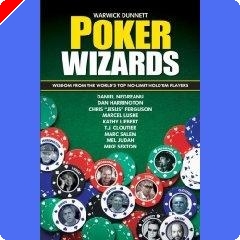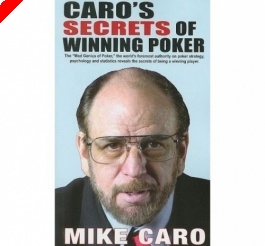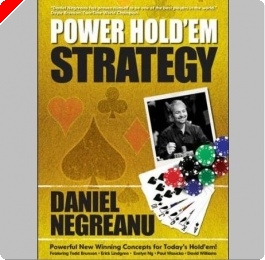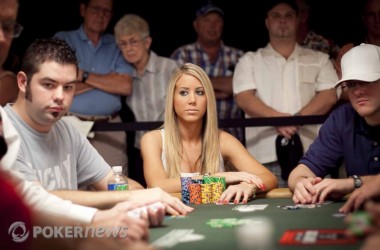Poker Book Review: Dan Harrington and Bill Robertie's 'Harrington on Cash Games, Volume I'
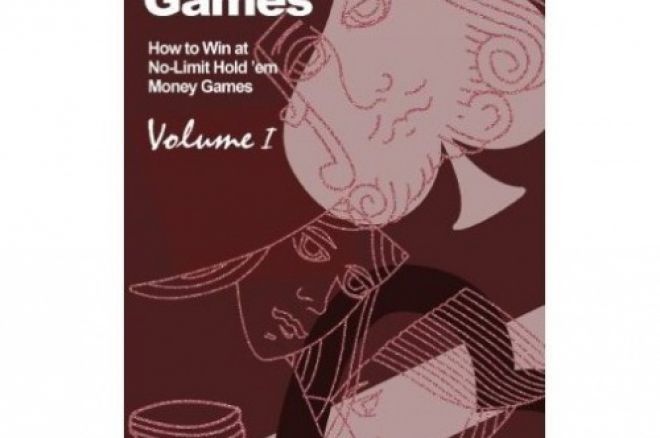
To say that Dan Harrington and Bill Robertie's hugely successful Harrington on Hold'em series changed the way tournament poker is discussed and played would be an obvious understatement. The first two volumes (published in 2004 and 2005) continue to rest comfortably near the top of lists of best-selling poker books, and virtually every book on hold'em tournament strategy written since further reaffirms the series' influence. Indeed, one might reasonably argue that the three HOH volumes' impact extends beyond NLHE tourney-focused discussions to the entire category of poker books in general. In a realm increasingly dominated by other forms of information gathering and instruction (e.g., forums, videos, podcasts), the pair's writings provide compelling evidence that certain ideas and concepts are perhaps still best conveyed in book form.
Building on the success of the HOH series, Harrington and Robertie have followed with the complementary two-volume set Harrington on Cash Games, which the authors insist from the outset are "more difficult to master" than tournaments. As one might expect, the new books demonstrate many of the same features that recommend the former series: smart organization, clear explanations of difficult concepts and theories, and the effective combination of those ideas with sample hands and "problems." This review will focus primarily on Volume I; however, let me here unreservedly recommend both books as worthy additions to any serious poker player's library.
Published simultaneously, the two volumes are intended to be read together, and while the nearly 800 pages may seem overly daunting to some, the pair's accessible style and careful presentation make the journey much less arduous than it might have been otherwise. The books are written for a general audience, although the authors do assume the reader possesses some familiarity with no-limit hold'em. Indeed, early on the typical reader is characterized as someone who has "probably learned how to play no-limit hold'em in the aftermath of the great poker boom" of 2002-03, who "started playing online sit-and-go's, then multi-table tournaments," and perhaps some live tourneys as well. Assuming that such a reader has now become interested in cash games, Harrington and Robertie are here to help.
Volume I therefore starts with an introduction detailing certain key differences between cash games and tournaments, concluding with a sample hand from "High Stakes Poker" that well dramatizes several of those distinguishing factors. Part One, "Basic Ideas," covers essentials like calculating odds, counting outs, bet types (value bets, probe bets, bluffs), and other areas covered in the HOH books. That is followed by a lengthy part outlining "The Elements of No-Limit Hold'em Cash Games." Parts Three through Five then begin to present the tight-aggressive style favored by the authors, primarily concentrating on preflop and flop play.
Harrington and Robertie insist that "cash game poker, like tournament poker, can't be easily learned as merely an application of some abstract principles." The pair do, nevertheless, introduce several core ideas in Volume I intended to guide one's thinking upon taking a seat at a NLHE cash game. Many of these ideas are introduced in the part outlining "The Elements of No-Limit Hold'em Cash Games," such as the crucial importance of recognizing the all-encompassing significance of stack sizes.
When playing with deep stacks (i.e., 100 big blinds or more), certain factors emerge that may seem alien to the player primarily versed in fast-structured tourney play. For one, say the authors, "hand values normalize" in deep-stack cash games, meaning the difference in strength between premium hands and weak hands "gets smaller and smaller as the stacks get larger and larger." Implied odds become an especially important factor in deep-stacked play as well, thereby allowing one to play many more hands �� including hands one might instinctively toss in a shorter-stacked game or most tournaments �� in the hopes of capturing an opponent's entire stack, which is, in fact, "the central focus of the game" when stacks get deep enough.
The pair frequently sound the "small hand, small pot, big hand, big pot" mantra, echoing the "pot size philosophy" espoused in David Sklansky and Ed Miller's No Limit Hold'em Theory and Practice (2006). One must also constantly remain cognizant of pot commitment, carefully sizing one's bets on all streets so as either to encourage or discourage pot commitment, depending on one's goals for the hand.
Other ideas emphasized here follow what we've seen the authors recommend previously, such as the notion that "most players play most hands in a relatively logical way most of the time." While one must always remain aware of factors that cause players to vary from such straightforward play, bets usually mean what they appear to mean. In other words, "Don't assume your opponents are wizards until they've shown that's the case."
By the same token, the pair recommends mixing up one's own play to the extent that you successfully "make yourself both unreadable and unclassifiable." As was suggested in HOH, readers are encouraged when facing a particular decision to assign percentages to one's choices in order "to vary our approach across all reasonable strategies." We again are told to use the second hand on our watches to help us "mechanize the randomization process" (since we humans have such a hard time doing so otherwise). Such is a special consideration here in Volume I, as the authors point out such "randomizing" or "balancing" plays are usually more appropriately employed before or on the flop, and not necessarily on the later streets.
That idea to "diversify betting sequences" also factors into the discussion of "metagame" considerations, such as when one attempts to craft a misleading image by playing hands in what appear to be "strange and non-optimal ways." One of the most effective passages in Volume I comes during the discussion of metagame when the authors narrate and analyze another "High Stakes Poker" hand to illustrate their points.
In addition to the occasional analyses of hands from "High Stakes Poker" and other commonly-faced scenarios, each of the three parts concerning tight-aggressive play culminate with "the problems" in which specific cash-game hands (both online and live) are analyzed in context. Even though these parts nominally focus on preflop and flop play, a number of the nearly 60 hands analyzed here are carried through to the river. As was the case in the HOH series, these discussions are especially illuminating and helpful. Of course, not everyone will agree with all of the advice or suggested percentages when weighing one's decisions. Even so, the concrete examples go a long way towards helping hammer the theories into a coherent, highly understandable approach.
As mentioned before, the two volumes are intended to be read together, so one needs to go to Volume II in order to find the full discussion of tight-aggressive play on the turn and river (Parts Six and Seven). The second volume then goes on to offer a discussion of tells, table talk, and revealing patterns (Part Eight); briefly outlines strategies association with a loose-aggressive style of play (Part Nine); gives advice for handling especially weak games (Part Ten); considers bankroll management and associated concerns (Part Eleven); and concludes with an interview with long-time cash-game specialist and 1979 WSOP Main Event runner-up Bobby Hoff.
Each of these parts will be examined in a subsequent review of Volume II, appearing here in two weeks.
Ed note: PokerNews is the best place to look for exclusive online poker bonus deals. The Party Poker bonus code will unlock $50 poker money for free, when downloading Party Poker through PokerNews. Also take a look at our Party Poker Freerolls page.

